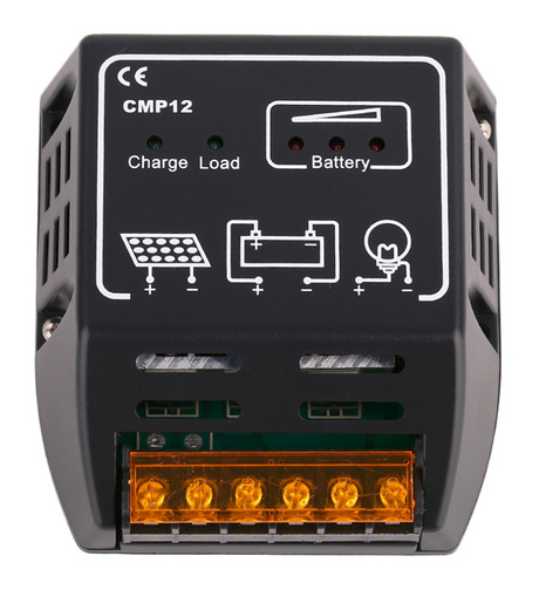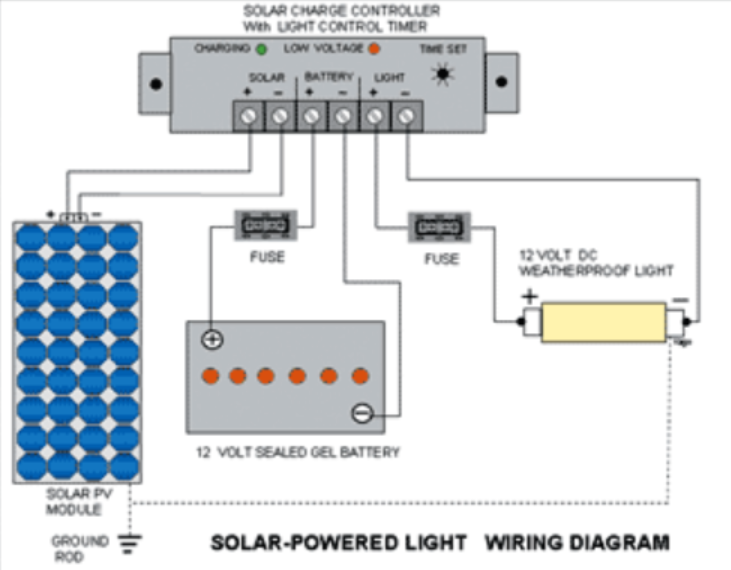Solar Panel Charging
By: Mohammad Yakoub (Mission, Systems, and Testing)
Verified By: Jordan Smallwood (Project Manager)
Approved By: Miguel Garcia (Quality Assurance)
Table of Contents
Introduction
The objective of this blog post to find a way to charge the main battery with the solar panel cells. There are different ways to go about this, but I found that the best way for our project is to use a charge controller. This way we can make sure that we do not overcharge the battery with our solar panel.
The specific charger we are using is called The xcsource Solar charge Controller. This specific one is purchased from amazon.
Figure 1: Top View of Charge Controller
A charge controller is basically a voltage/current regulator to keep batteries from overcharging. It regulates the voltage and current coming from the solar panel going to the battery. Most solar Panels supply more voltage than rated, because these panels need ideal conditions to be able to provide full power, and those conditions are impossible to meet. The panels are designed to provide power than rated, so it can still function in less than ideal conditions. So without regulating the solar panel The battery can be damaged from overcharging.
How it Works
The way that works is we connect the solar panel and the battery to the charge controller. The charge controller will charge the battery and power our components. The charge controller will charge the battery until the it reaches a full charge and as the battery charge gets higher the controller will reduce the solar panel output to avoid overcharging the batteries. Once the battery is nearly full, the charge controller only sends a trickle charge to top off the batteries without overcharging them. This process is known as the off grid charging. An alternative process is to allow the solar panel to supply power to our components directly, but that is not as efficient, and will not be able to supply enough energy for the motors. When the battery reaches a full charge the controller will switch the power output of the solar panels to a dedicated load, such as a light or heating filament.
Figure 2: Typical connection of Solar Panel – Battery Controller
Conclusion
As mentioned earlier the charge controller is mainly used to prevent overcharge, and improving charge quality. But that is not the only advantage of using the charge controller, it can also prevent battery discharge in low or no-light conditions. Discharging can happen when the sunlight goes out the battery will discharge to heat the solar panels. However, the charge controller will detect the batteries discharging and disconnect the panels, to prevent the discharging of the battery. This can also be achieved by using solar panels with blocking diodes that prevent battery discharge during low or no-light conditions, but such systems are not as efficient when using high power solar panels.
References
- https://www.batterystuff.com/kb/articles/solar-articles/solar-info.html
- https://www.amazon.com/Controller-Charge-Battery-Regulator-Protection/dp/B010FNO9NU/ref=sr_1_3?ie=UTF8&qid=1525723142&sr=8-3&keywords=solar+controller+10a
- https://www.aliexpress.com/item/10A-CMP12-12V-24V-intelligence-Solar-cells-Panel-Battery-Charge-Controller-Regulators/619325690.html?src=google&albslr=119861048&isdl=y&aff_short_key=UneMJZVf&source=%7Bifdyn:dyn%7D%7Bifpla:pla%7D%7Bifdbm:DBM&albch=DID%7D&src=google&albch=shopping&acnt=708-803-3821&isdl=y&albcp=653153647&albag=34728528644&slnk=&trgt=61865531738&plac=&crea=en619325690&netw=s&device=c&mtctp=&aff_platform=google&gclid=Cj0KCQjwodrXBRCzARIsAIU59TK4xse4VJUY-AmA0KTMhI5Mr_pqDeCrQ-Z9OL_oY1lKCcZHztYFMXEaAlqtEALw_wcB&gclsrc=aw.ds
- http://uisalumnisage.org/solar-light-wiring-diagram-2/for-solar-light-wiring-diagram/


